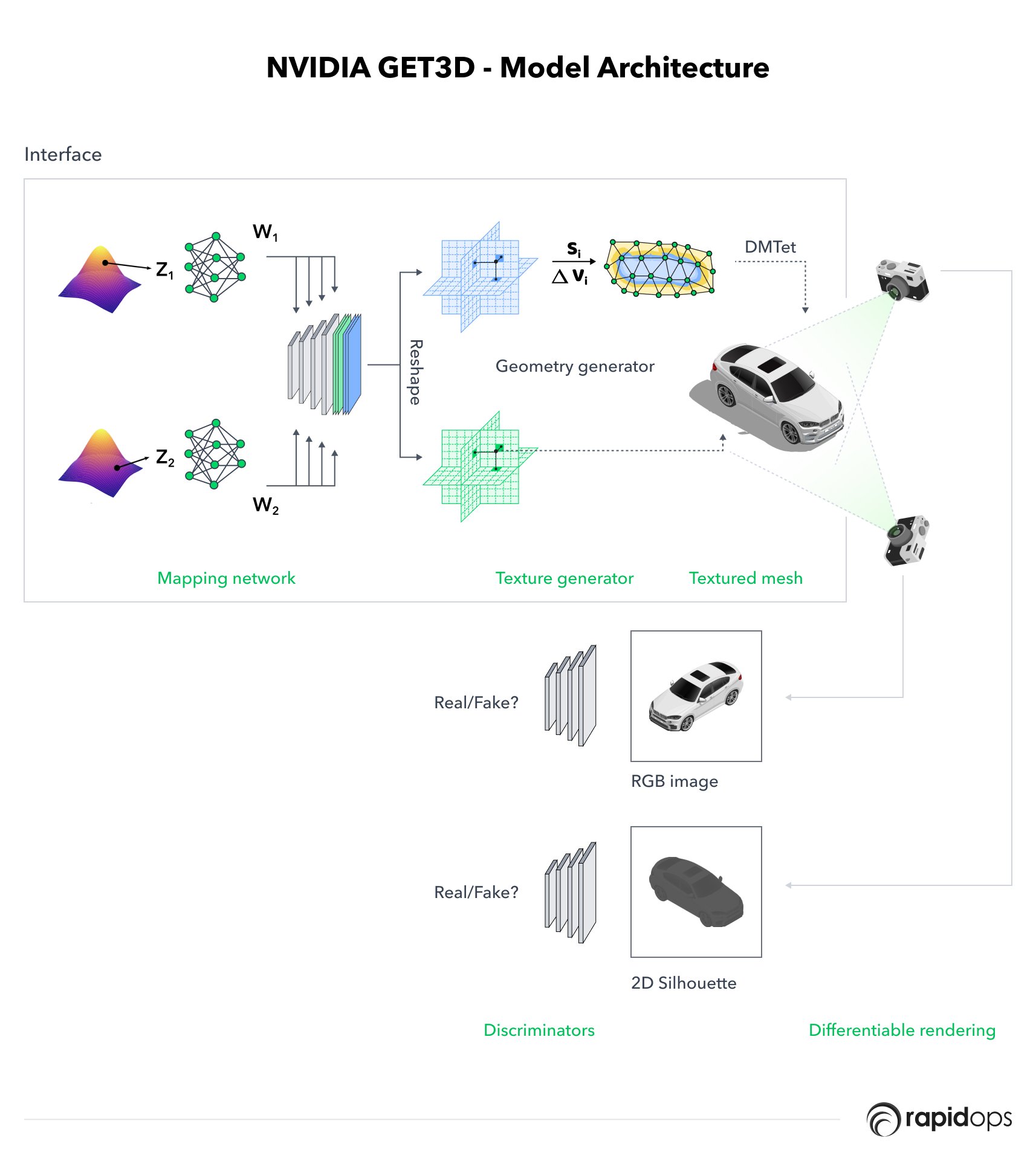NVIDIA GET3D: Revolutionizing AI-Powered 3D Object Generation
NVIDIA Research introduces GET3D, an advanced AI model designed to revolutionize the creation of 3D objects for virtual worlds. By training solely on 2D images, GET3D generates high-fidelity textured 3D shapes with complex geometric details. This groundbreaking technology, developed by NVIDIA, has the potential to reshape the industries of gaming, robotics, architecture, and social media.
Technical Details
GET3D is a powerful generative adversarial network (GAN) comprising two key components: a generator model and a discriminator model. The generator model consists of a geometry branch that produces a differentiable representation of a surface mesh with varying topologies and a texture branch that generates a color-matched texture field for the given surface. The discriminator model consists of a shape discriminator and a texture discriminator, responsible for distinguishing between real and generated 3D shapes and textures, respectively. The generator model consists of approximately 10 million parameters, while the discriminator model comprises approximately 15 million parameters.

Capabilities
GET3D offers a range of impressive capabilities, including:
- High-Fidelity GET3D generates 3D shapes with remarkable fidelity, capturing intricate details and textures to produce visually stunning and realistic objects.
- Scalability By leveraging its extensive training data, GET3D exhibits scalability, enabling the generation of a virtually unlimited number of 3D shapes for diverse applications.
- Speed GET3D operates at an impressive speed, capable of generating 20 shapes per second on a single NVIDIA GPU, facilitating real-time applications in virtual worlds, gaming, and more.
Limitations
While NVIDIA GET3D offers groundbreaking capabilities, it is important to consider its limitations to ensure realistic expectations and informed usage of the model. Here are some key points to keep in mind:
- Data Dependence GET3D's performance heavily relies on the quality and diversity of the training dataset, which can impact its ability to generalize to new or uncommon shapes.
- Complexity of 3D Shape Generation Generating high-fidelity 3D shapes from 2D images remains a complex challenge, requiring the model to capture and understand the intricate relationship between the two domains.
Use Cases
GET3D finds applications across various domains, including:
- Virtual Worlds GET3D enables the creation of immersive virtual worlds populated with realistic 3D objects, enhancing user experiences and engagement.
- Gaming Game developers can leverage GET3D to design lifelike 3D characters, objects, and environments, elevating the visual realism and immersion of gaming experiences.
- Architectural Design GET3D empowers architects and designers to create highly detailed and realistic 3D models of buildings and structures, aiding in visualization and planning processes.
- Robotics GET3D facilitates the generation of accurate 3D models of objects that robots interact with, enabling precise manipulation and interaction capabilities.
NVIDIA GET3D represents a significant leap forward in AI-powered 3D object generation. Through its ability to transform 2D images into high-fidelity 3D shapes, GET3D empowers developers and creators to populate virtual worlds with diverse and realistic objects. The versatility and accuracy of GET3D make it an invaluable tool in various industries, unlocking new possibilities for immersive experiences. NVIDIA's commitment to research transparency and ongoing innovation ensures a promising future for AI-powered 3D content creation.
Got questions? We’ve got answers!
How does GET3D work?
Is GET3D a new generative AI model?
Is NVIDIA GET3D open-source?
Is NVIDIA GET3D free?



